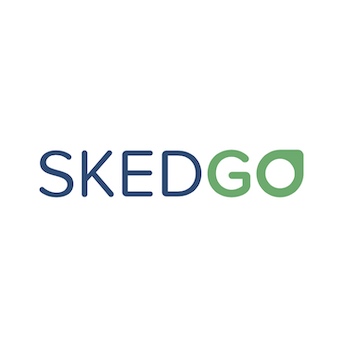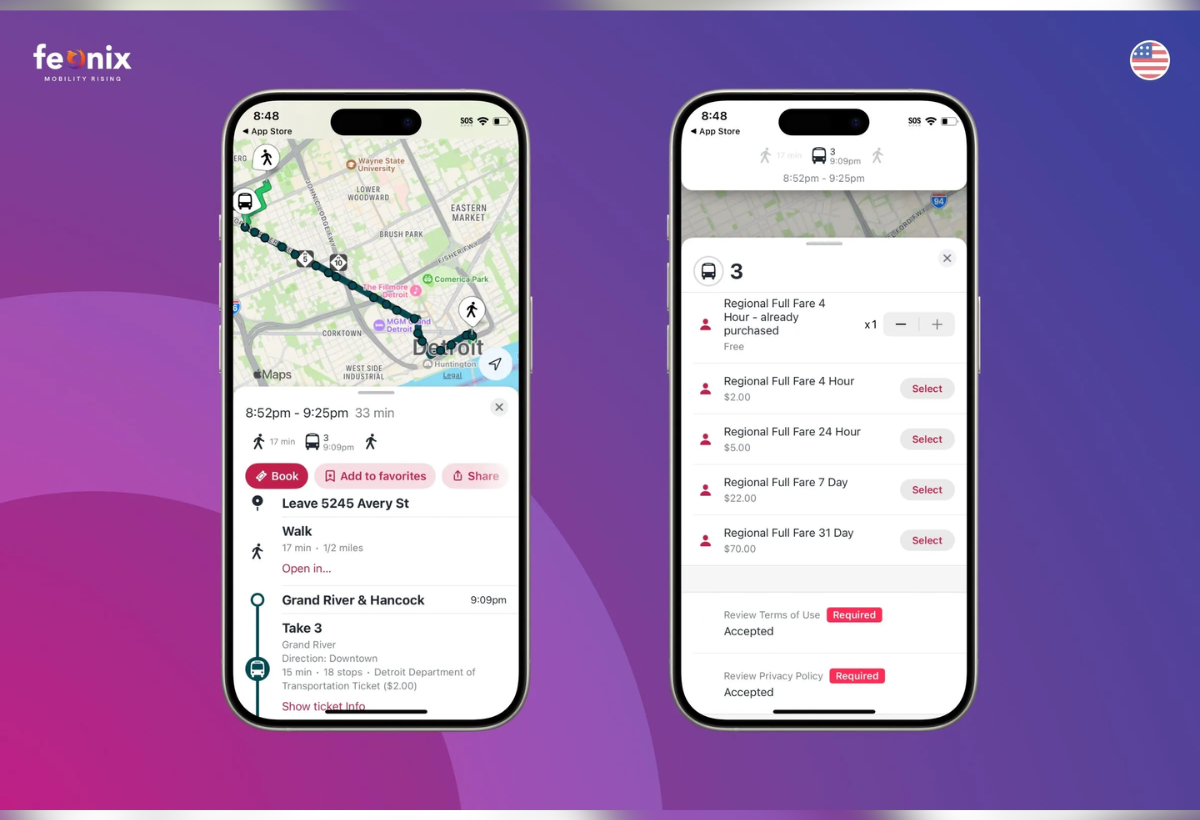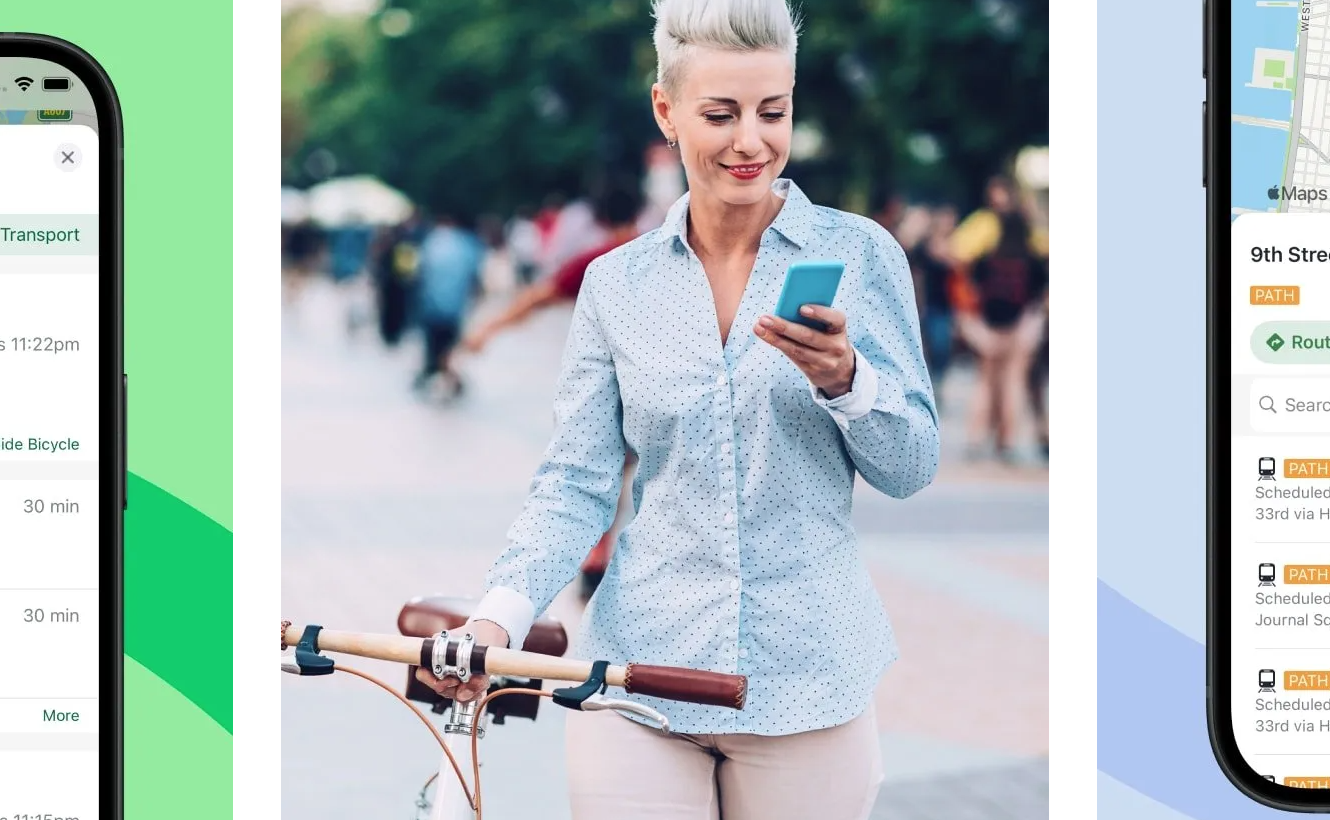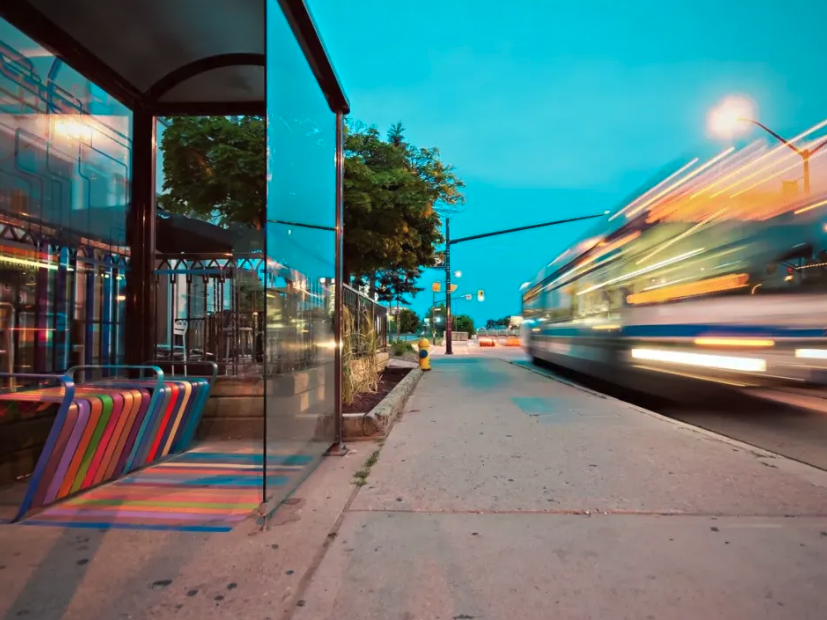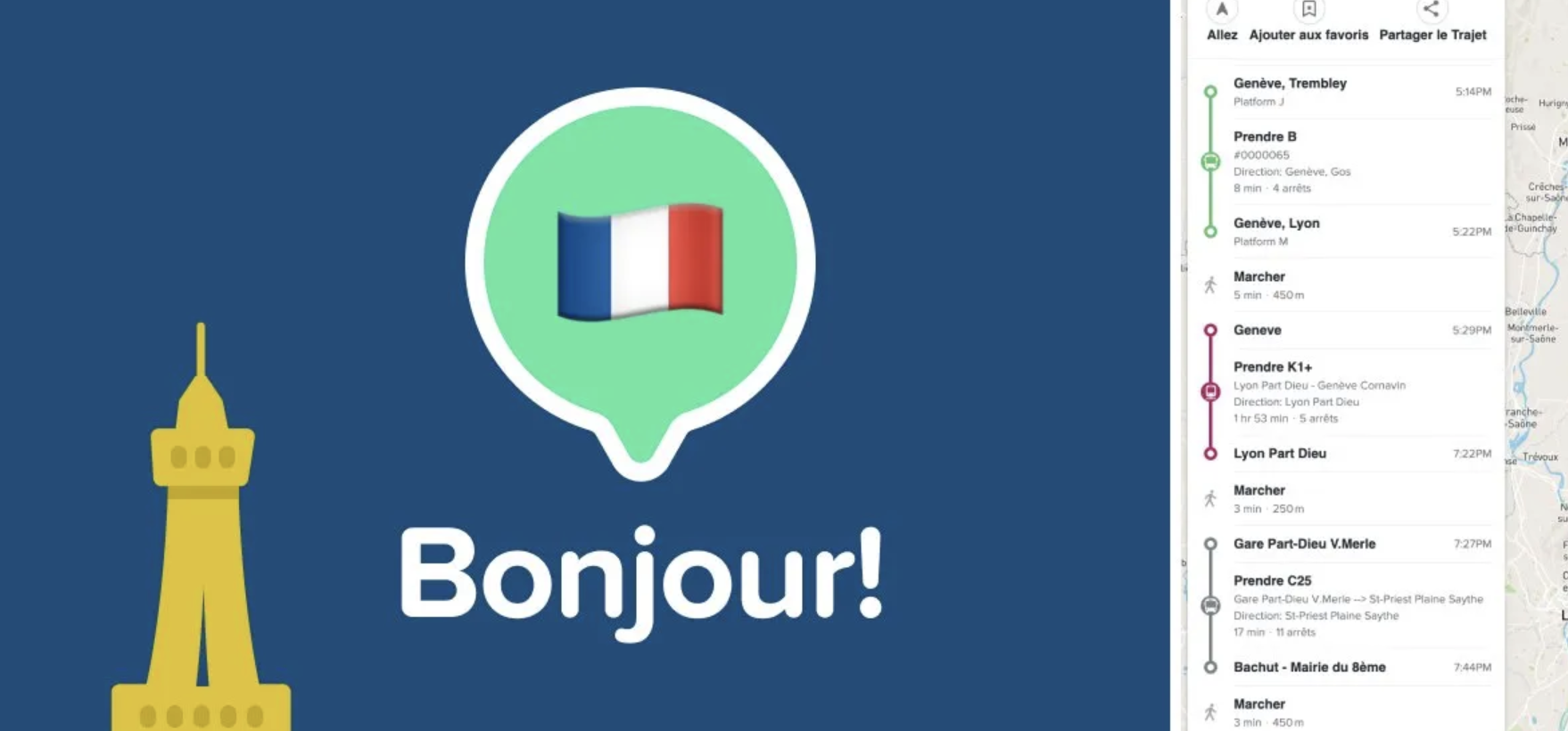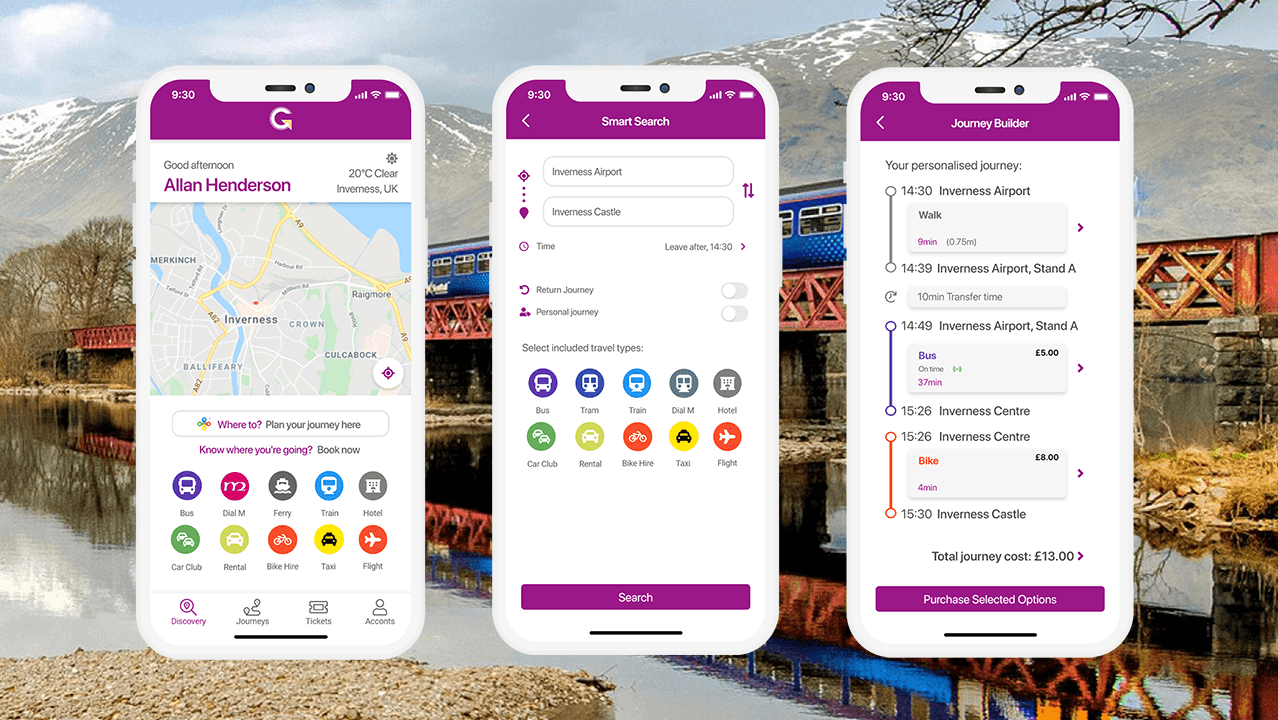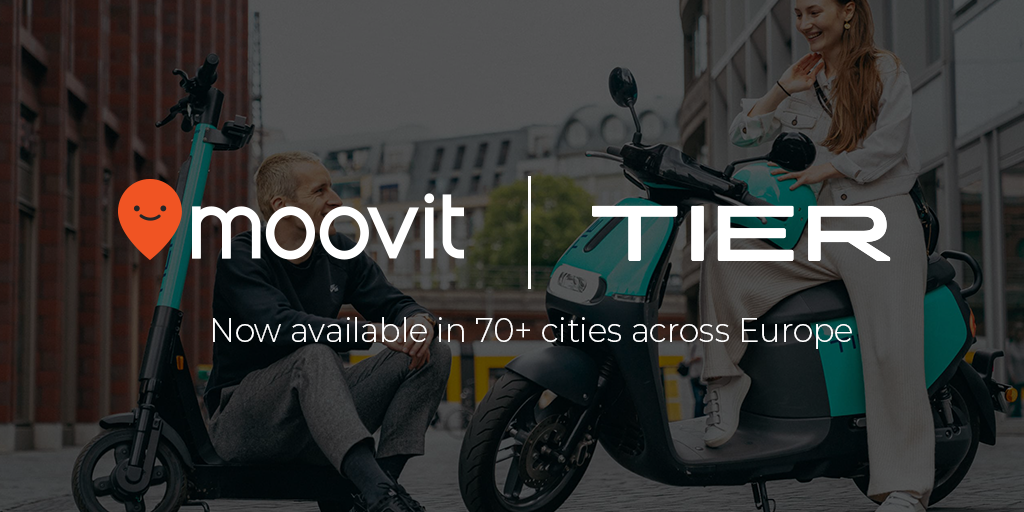Personalised MaaS: The Next Big Thing?
The quest for personalisation is nothing new. It’s particularly prevalent in marketing and the retail sector. Whether it’s personalised products, services or other buying experiences, understanding purchasing behaviour helps to tailor offerings to reflect personal preferences and attract more buyers.
According to McKinsey: “Advances in technology, data, and analytics will soon allow marketers to create much more personal and “human” experiences across moments, channels, and buying stages. Physical spaces will be reconceived, and customer journeys will be supported far beyond a brand’s front door.”
A similar trend is quietly growing in the transport sector in the shape of mobility-as-a-service (MaaS). In fact, MaaS is possibly the ultimate channel to personalise both user and transport provider experience.
The Difficulties of Journey Planning
If we think about the old way of planning a journey as a service user, it was often quite a laborious process, especially where there were multiple legs in a journey. You’d need to consider many things: Which transport options are available to you? Could you take your kick scooter, skateboard or bicycle on the bus/train/tram/ferry? If your journey includes public transportation, what are the timetables? Will a limited timetable impact on your next leg? If it does, is there another option that works or do you have to start over? Do you need change or pre-buy a ticket to pay for your public transport? Are all options accessible for your wheelchair/pram?
That’s why people often fall back on using private cars. It’s just so much easier. As Andras Keri, Manager at PwC Advisory, points out, “In our current transport system users need to plan and book their travels on different platforms, then pay for these services using different channels. The wider variety of modes the users wish to use, the more complicated and time-consuming it becomes to reach their destinations.”
Most of us have experienced times when we’ve needed to plan a journey that involves different transport modes such as a taxi journey, followed by train or bus and then a walk to our final destination. You research online, note down the details and times, platforms, stops, prices, availability and then look for connections for the next leg of your journey before checking Google maps for directions to your final destination. If you don’t know what transport options are available in a given geographic area this search is made even more difficult.

A Better Way to Travel
MaaS adds a welcome dimension to travel that we’ve never experienced before; one that brings all the different city transport options together so we can plan, book and pay in one go. No queue, no need to carry cash. It’s a much more efficient way of organising transport, saving a great deal of time and energy – and it doesn’t stop there. MaaS also allows users to personalise their transport options in more ways than we might think.
The Different Types of MaaS Personalisation
Transport Modes
There is an array of options that are now available particularly in cities: public transport, micromobility (such as e-scooters or e-bikes), car sharing, ride hailing, car hire, cycling, or walking. These options are available as single or multimodal options depending on user preference.
Time
MaaS takes the whole journey into account – including each of the different modes – working out departure time, arrival time and allowing for stop-offs in between. These journeys are created in seconds based on the user’s personal preferences and availability of modes of transport. No searching online and trying to piece the jigsaw journey together, saving a great deal of time.
Convenience
If you need to get somewhere quickly, do you know the best transport modes to take? Train? Micromobility? Ride-sharing? What if there’s a major disruption? As long as the data is available, MaaS can provide this insight and alternative options – even en route – so you arrive at your destination in the least amount of time possible.
Route Choice
Maybe there’s a specific route that you want to take, or you’d like to take your bike on the train and then cycle the rest of the journey. Are there cycle lanes? How cycle-friendly is the route? MaaS can steer you in the right direction, making suggestions based on your preferences such as a more scenic route – all from your mobile phone.
Cost
If you’re on a budget then you can see instantly how much the whole journey is going to cost from beginning to end, including all legs of the journey. MaaS can also provide ways to pay in-app so no queuing up at the ticket office. It’s also possible to personalise the app so that it always provides the most cost-effective modes and routes.
Comfort
This is a factor for many people, particularly for longer journeys. MaaS can help users access preferred types of shared vehicles, find less crowded carriages and know that there are working toilets on trains or at stations, operational buffet cars, sleeper carriages, wheelchair spaces, ramps, working lifts and more. Without MaaS, travellers are left having to ring ahead or take their chances.
Offers and Incentives
This is where MaaS has a lot of potential. It can allow users to be sent incentives at various touchpoints along their journey. This could be in the planning or purchasing stage, during the trip or at the final destination. Offers from retailers, food outlets, free rides or loyalty schemes, including gamification, could be used to encourage travellers and reward them for particular behaviours such as using sustainable transport.
Health and Safety
This goes hand-in-hand with comfort to some degree, including details about which coaches are less crowded or have been cleaned recently. This can help travellers make choices that best fit their needs, particularly post-Covid. As more high-quality data becomes available, so too does the information that can be provided within the MaaS app such as weather conditions, health considerations, traffic/service disruptions, reliability, reviews of services and more to further customise the experience.
A Final Word
MaaS isn’t just about getting from one place to another. It’s about incorporating the experiential element of travel – connecting transport with what matters to users, whether they are city residents, commuters or visitors to a region. The hassles many accept with transport and travel can be greatly reduced with MaaS, making it a more seamless, better experience all around. What makes this even more enticing is that through this technology governments, cities, companies and mobility providers can offer much better services to their customers and benefit from the upside of potential greater usability and revenues.
SkedGo provides the technology and intelligent algorithms to power MaaS applications.
Photo by Andrea Piacquadio from Pexels.
This article was originally published by SkedGo Pty Ltd.

